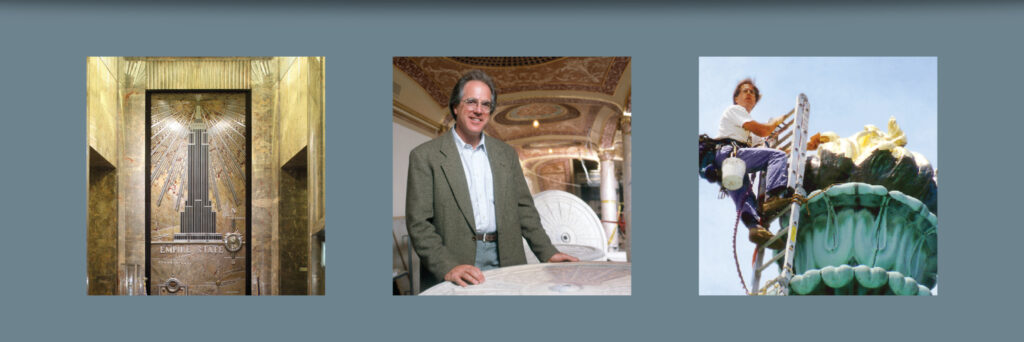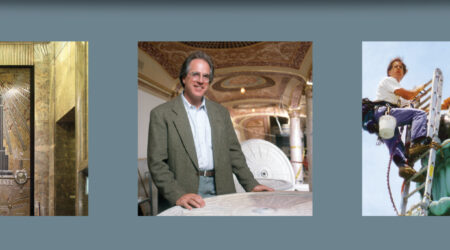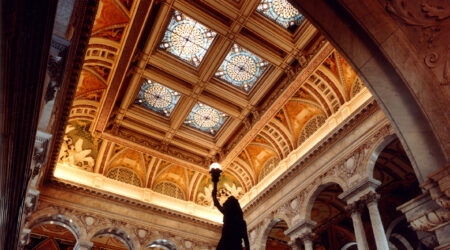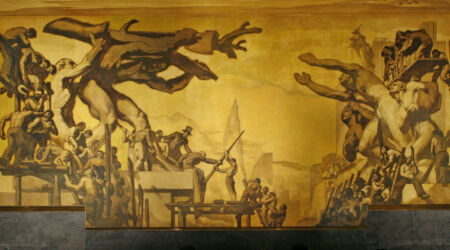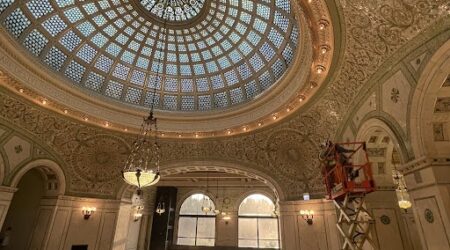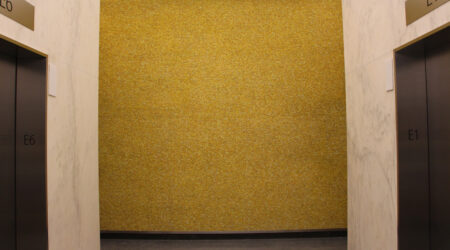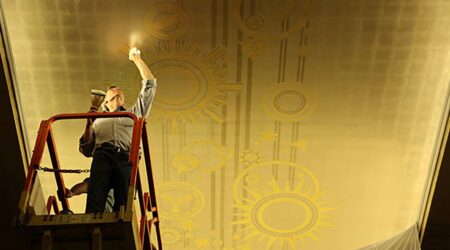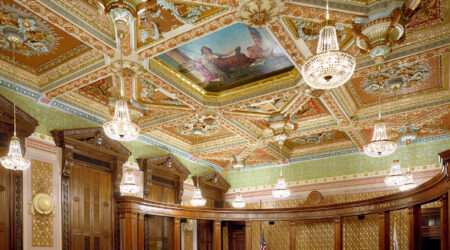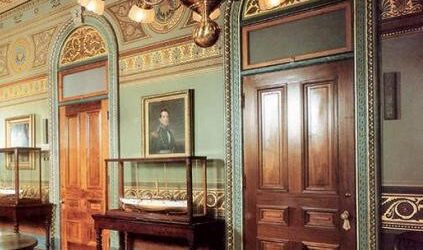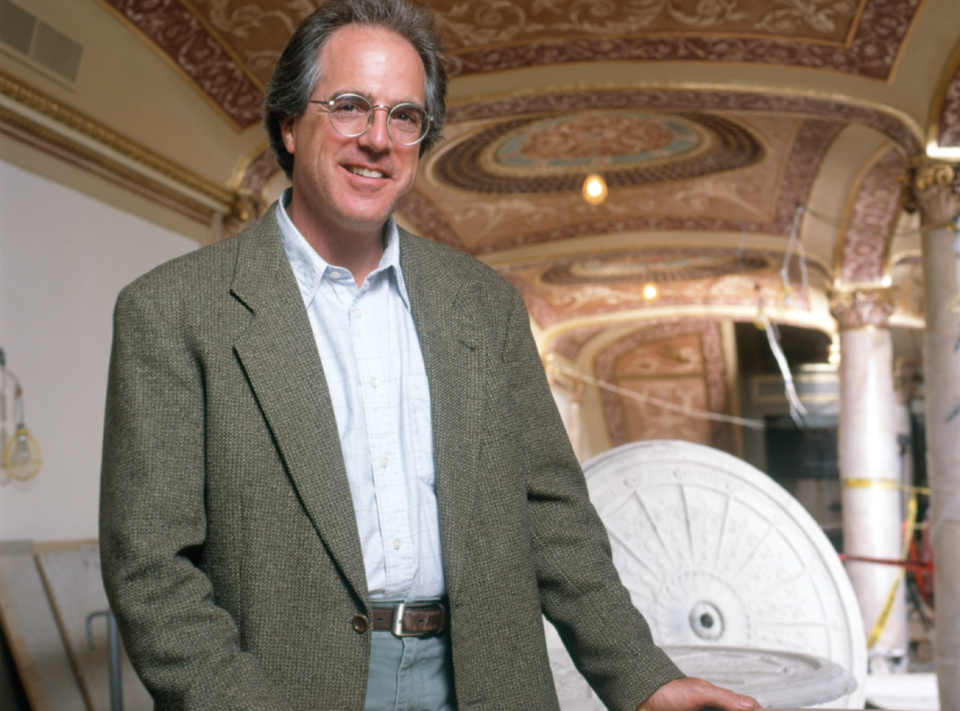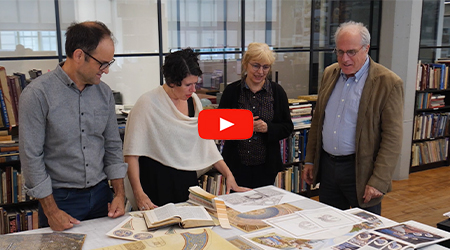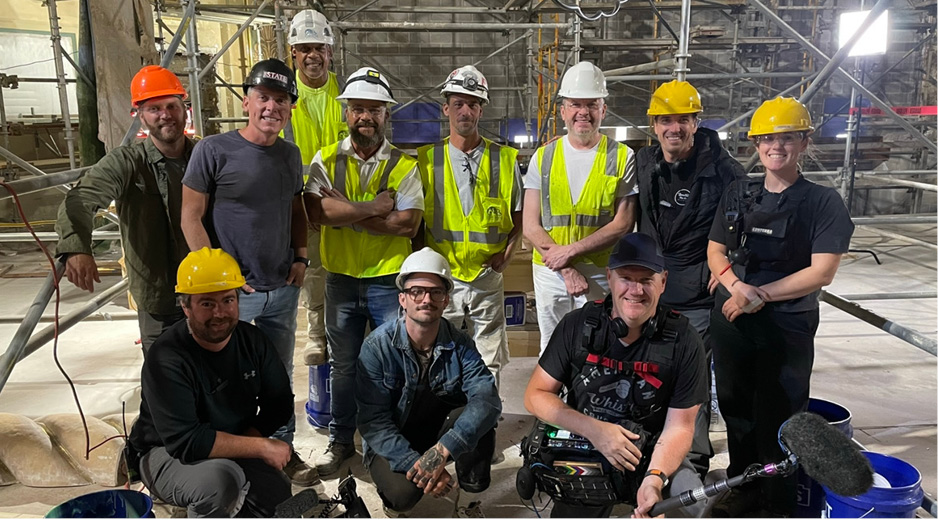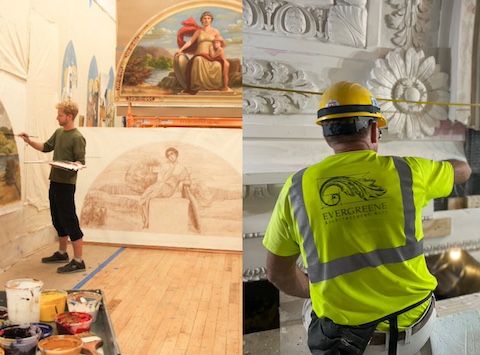Traditional Building sat down with Jeff Greene, Executive Chairman & Founder of EverGreene, to discuss the company’s four-decade legacy in architectural arts and historic preservation. In this excerpt, Greene shares insights on EverGreene’s approach to craftsmanship, conservation, and the evolving landscape of preservation.
What excites you about the field today?
There’s this wonderful chemistry, even alchemy, of bringing different fields together: conservation/science, craft, construction, architecture, and art. People are doing individual things, but the beautiful thing is that EverGreene brought them all together, respecting each discipline. This is the field of preservation. In the 1980s, this was relatively new. (See the Association of Preservation Technology: apti.org.)
I’m always digging into the dustbin of history, researching old techniques and materials to solve modern problems. It’s an endless learning process: finding out about unusual materials, like scagliola, zenitherm, and carton pierre. Every project has something new to teach us. With a forensic approach, we look at materials, pathologies, and mechanisms of deterioration, to diagnose the patient, which is the built environment or artifact. Then we apply our knowledge to solutions. The process of discovery is where the growth is, the excitement.
What would you say to students who want to work in artistic restoration, while the world around them is fawning to the gods of technology?
Look, in 1900 New York City, there were more than 10,000 stonemasons, today there are less than 1,000. But the buildings are still there, and we continue to build. Architecture will always need restoration: stone, painted plaster, plastic. There is no shortage of buildings that need to be restored. Take the Lever House on Park Avenue in Manhattan, built in 1950. EverGreene helped restore the mosaics in this building. There is absolutely a necessity for these craft skills, this will ensure the future.
We need people who have intellectual skills and people who want to work with their hands. We need both the practical and pragmatic. We will need to embrace AI and other technological tools. We have to respond to the marketplace, but learn from the past. There will always be a need for restoration knowledge. We also have to preserve the skills as well as the objects.
